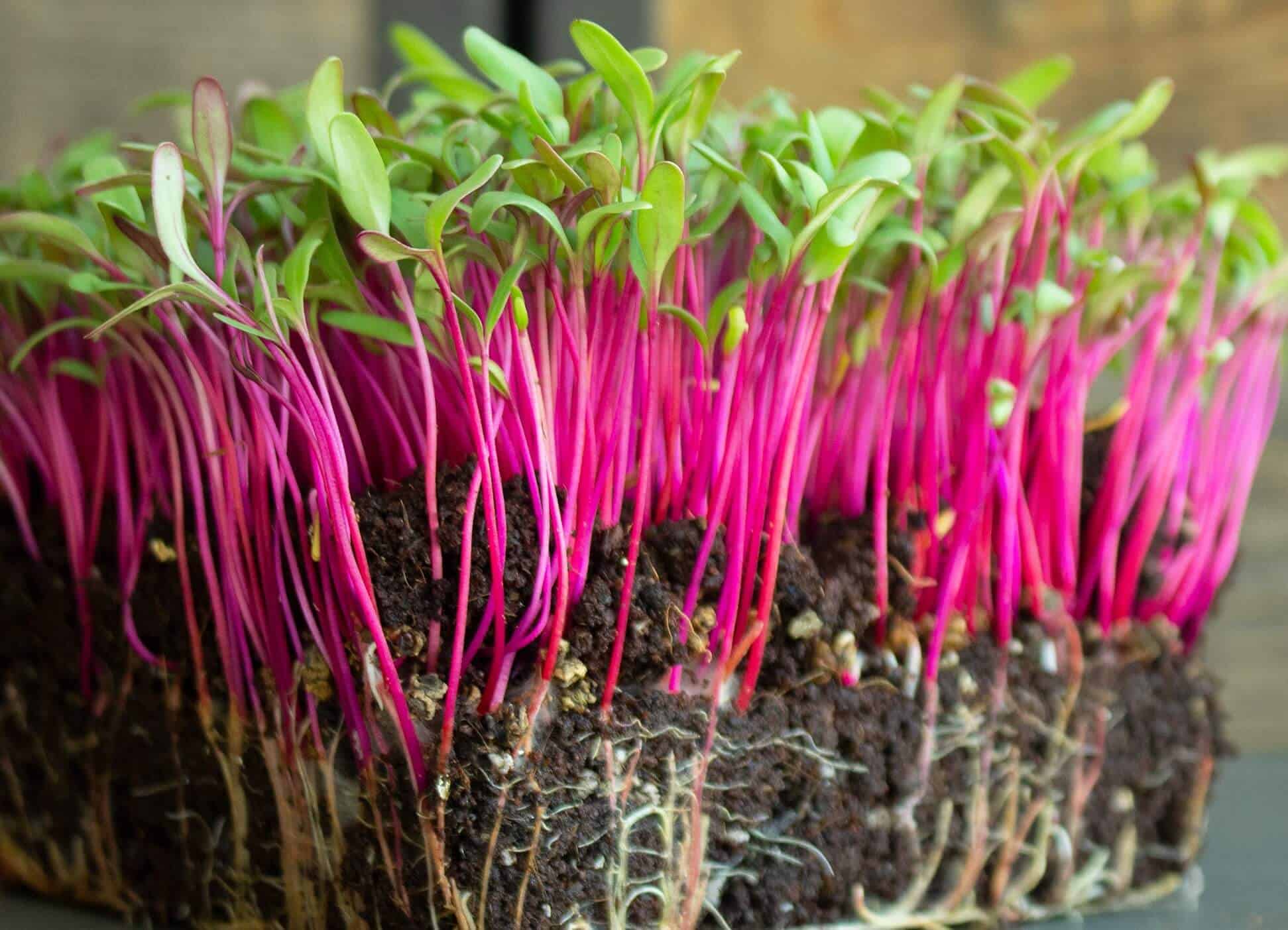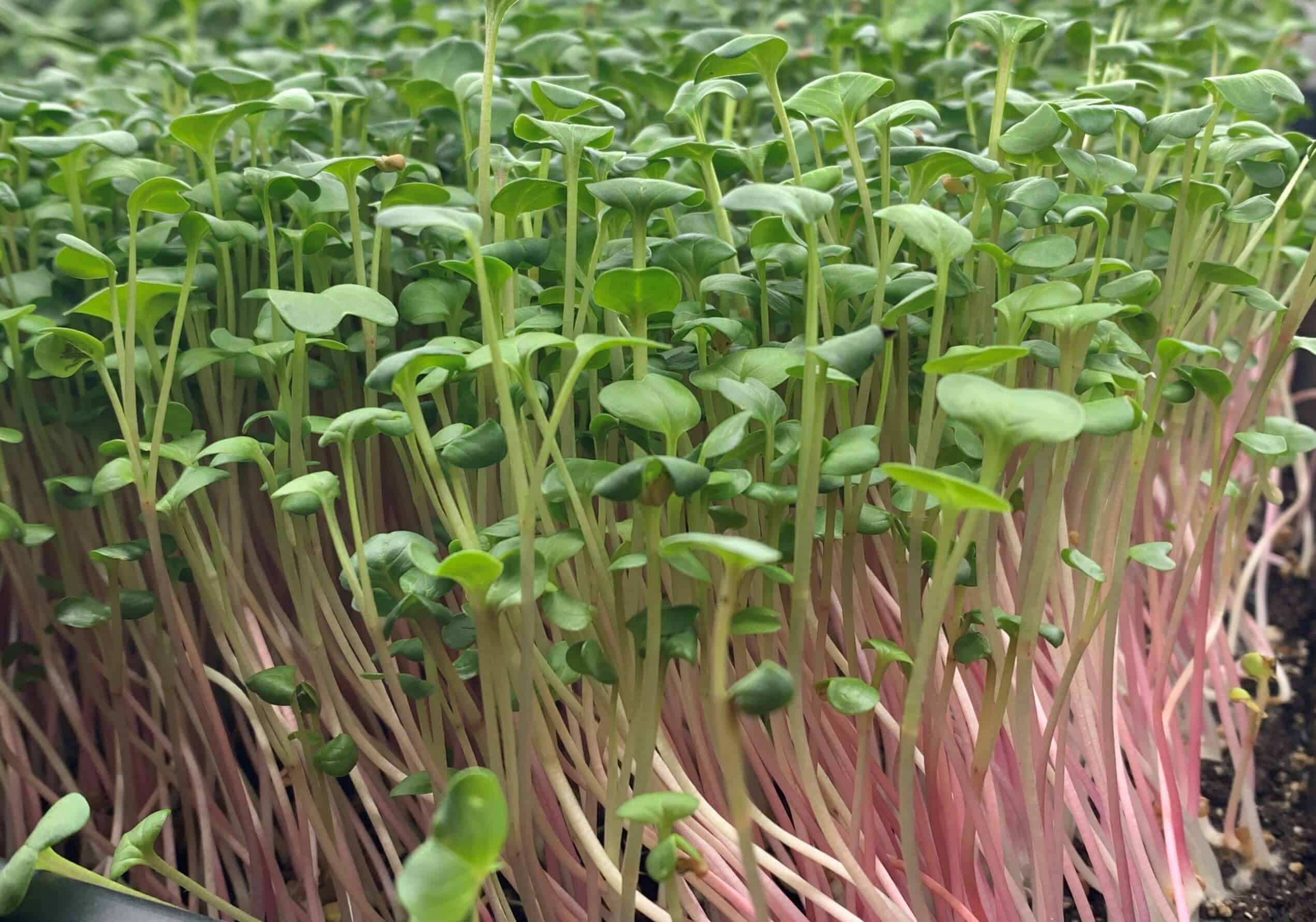Whether you're looking to add diversity to your diet and profitability to your microgreens business or simply to give them a try, here are the best microgreens to grow indoors and get off to a successful start.
This list contains baby greens that are delicious and nutritious. The only drawback is that they are expensive unless you grow them yourself. As a bonus, children like growing microgreens because they provide quick rewards. You can start with specific microgreens, a pre-packaged seed mix, or choose a Mesclun mix.
With this information, you can harvest your own fresh, nutritious, living greens all year long with a minimal investment of money, time, or horticultural knowledge. That’s how important it is to know what you should and can easily grow.
If you want to learn how to grow microgreens at home as a hobby or building a 6-figure microgreens business that is profitable, you need to enroll in Microgreens Masterclass by React Green. It is one of the best courses in the market and I have reviewed it here.
But for now, let’s check out the list of microgreens you can give a try:
Let’s dive in:
19 Fresh Microgreens to Grow Indoors Throughout the Year
1. Broccoli

Broccoli is with no doubt one of the best microgreens to grow indoors throughout the year for two reasons; first, they are very easy to grow with a high germination success rate, and second, they take 7-15 days before you have them on your plate.
Besides, they add freshness, a crunchy texture, and a much less bitter flavor than the mature broccoli to your food.
If you are a complete newbie growing microgreens, then you should start with growing broccoli microgreens and if you’d like to perfect the craft fast then you can check out this Microgreens Masterclass.
2. Beetroot
The most popular variety is the ‘Bull’s Blood’ beet which germinates within 3-4 days. The estimated time to harvest is 10-12 days and your petite greens will have several green leaves and dark vibrant red stems.
Beets are nutritious and very delicious with a slightly earthy flavor like the root. However, some varieties taste similarly to baby spinach. When used to garnish your food or in a sandwich, they have an exotic look that will whet your appetite.
3. Mesclun
In French Mesclun means “a mixture.” Mesclun in this case is, therefore, a mixture of several varieties of tender greens that are pre-mixed to grow together for easy cutting.
Mesclun seed mixes are a good choice for microgreens since you don’t have to grow specific varieties and then have to mix them in a dish. Mixes such as Paris Market Mix and Asian Baby Leaf Mix contain a blend of greens that tend to sprout at the same time.
Other mixes often include leaf lettuce, arugula, endive, frisée, mizuna, oak leaf, mâche or lamb's lettuce, radicchio, sorrel, chervil, groundsel, and dandelion.
4. Radishes
If you’re a complete beginner in the world of microgreens growing, then I’d suggest you start with Radishes. They are among the easiest and fast-growing tender greens available.
There are two popular radish microgreens seeds in the market. The 'Confetti' Radish Mix and 'Red Stem' Radish. The former is a new formulation of easy, fast, and colorful radishes while the latter is one of the fastest-growing.
With vivid, deep red stems, radishes are lofty and add weight and volume to micro mixes.
5. Arugula (Rocket)
The Arugula is not only easy to grow but grows fast as a microgreen with an estimated time to harvest of 6-8 days! It's a favorite and generally considered a staple of the spicier side of microgreens and baby salad greens.
Arugula microgreens are amongst the best tasting and flavorful tender greens but their intense tart and peppery flavor get milder as the plant matures.
6. Cress
Curly cress or garden cress is a popular, fast-growing, edible microgreen that is botanically related to watercress and mustard, sharing their peppery, tangy flavor and aroma.
The most popular variety is 'Cressida' Cress by Johnny Seeds (not affiliated – link in the resource section below) which has a spicy peppery flavor. It has fancy three-lobed leaves and is an excellent fast-growing selection for growers of all abilities.
The estimated harvest time is about 8 days.
7. Endive

Endive microgreens have a pleasant light green color with an exceptional taste and a slightly bitter taste that makes a nice contrast to strong flavors like sweet, salt, and spice.
They are excellent sources of vitamin K, vitamin A, folate, and in their raw form, vitamin C. They are quite short. This means you have to harvest them close to the root line and wash them properly.
You can harvest these light green beauties any time after 10 days.
8. Mizuna
Mizuna, also known as the Japanese mustard, is a fast and easy grower and a mild-peppery green color with very mild mustard or spicy flavor that isn't overpowering - similar to a weaker form of Tatsoi microgreens.
The estimated days to harvest 10-15 days depending on the prevailing environmental conditions. If you decide to grow outdoors, Mizuna is a good choice for interplanting in the shade of slower maturing crops to better utilize the available space.
9. Mustard
Mustard microgreens are said to be one of the most nutrient-dense foods in the world. They also have high levels of antioxidant properties which makes them popular among food enthusiasts and chefs.
A good example of a popularly grown variety is the 'Garnet Giant' Mustard which has mild, but distinctively mustardy and dark purple cotyledons that contrast with bright green, slightly toothy true leaves.
Mustard microgreens taste-hot mustard flavor that is zestier than the normal mustard. Depending on the variety, the expected time to maturity is 8-10 days.
10. Amaranth

Amaranth is one of the lesser-known microgreens to grow indoors but with unmistakable sweet, soft textured, and a unique earthy flavor. Their vibrant pink to red color makes amaranth microgreens a favorite with chefs. With a small amount of amaranth your salads will taste good as they look.
The most common Amaranth microgreens you can grow is the Red Garnet Amaranth which happens to be the most vibrant and colorful microgreens you can grow, with an estimated time to harvest of 8-12 days.
11. Fennel
Growing fennel microgreens indoors will ensure you have a steady supply of fresh vegetables throughout the year. You can then use them as a garnish for savory or sweet dishes.
Fennel microgreens are thin, green, and delicate. They have a mild anise flavor that makes them a great garnish for Italian or Indian dishes. Fennel will be ready for harvest within 12-15 days.
12. Spinach
Spinach microgreens have a beautiful dark green color to their young leaves with a unique mild-flavored taste. Besides, they are very easy to grow even for those without a green thumb.
Most importantly, Spinach has been associated with health benefits such as reducing the risk of cancer even though no official studies exist. Also, it’s said to be one of the best sources of dietary magnesium, which is necessary for energy metabolism, maintaining muscle and nerve function.
When you grow the spinach microgreens, you can plan to harvest from 2-3 weeks – which is a bit longer compared to most microgreens.
13. Kohlrabi
The most common microgreen is the Purple Vienna’ kohlrabi. The tender greens are vibrant, with purple to rose-colored stems and contrasting dark green leaves. The purple of the stem carries up between the cotyledons, and some of the leaves can also be purple-tinged.
They are very easy to grow and make a great base for salads. When you garnish them with any food, the beautiful purple color will whet your appetite and they taste great too. It only takes 8-12 days to have them on your plate.
14. Collards
Micro-collard greens belong to the brassica family and taste like mature collards. They are very easy to grow making them the best microgreens to grow indoors any time of the year.
The estimated time to harvest is 10-15 days when they become crisp and mildly flavorful. Collard microgreens are highly nutritious with both soluble and insoluble dietary fiber.
15. Cilantro/Coriander
Cilantro which is known as the coriander microgreens are healthier than the mature selves. The most common cultivar is Monogerm Cilantro which is easier to germinate and loses its seed coat more readily than whole-seed cilantro.
Monogerm cilantro microgreens have frilly leaves, a clean, fresh aroma, and subtle flavor. Unlike most of the microgreens on this list, cilantro take relatively longer to harvest – approximately 15-23 days. But again this depends on the variety and other environmental factors.
16. Cauliflower
Cauliflower microgreens are easy to grow, and you can sow them more thickly than most other seeds. They are favored for their purple to pink highlights in their stems.
Furthermore, they have high germination and consistent growth rate, where you can harvest them in between 8-12 days. They have a sweet, lightly peppery, and broccoli-like taste which makes them a wonderful choice for the salad mix.
17. Basil
Basil microgreens have more nutrients than the full-grown basil plant. However, they both have the same taste. The most common cultivar is the 'Dark Opal' Basil which is a colorful mix of purple, variegated, and green leaves.
This basil microgreen makes a sweetly distinctive garnish and it’s the main reason why it’s AAS Winner. You can expect to start harvesting after 12-20 days when the basil has at least a single true leaf.
18. Garlic Chives
Garlic chives microgreens have a taste very similar to the garlic bulb that is typically used in the kitchen but it is much more delicate and extremely fragrant.
The pleasant onion flavor is a great compliment to any microgreens salad, and the shape is a contrast to the rest of the microgreens.
Garlic microgreens are easy to grow with an estimated time to harvest of 14-25 days.
19. Leek
Leek microgreens are easy to grow and they add a ton of flavor to food similar to sweet onions. They are long and slender similar to miniature chives and belong to the allium vegetable family.
These microgreens contain a unique combination of flavonoids and sulfur-containing nutrients. Closely related to garlic with an estimated time to harvest of 10-12 days.
If you want to learn how to grow microgreens at home as a hobby or building a 6-figure microgreens business that is profitable, you need to enroll in Microgreens Masterclass by React Green. It is one of the best courses in the market and I have reviewed it here.
Conclusion
There you have it!
You just read about 19 microgreens to grow indoors any time of the year. Each of them adds a unique flavor and texture to any dish. The flavors are often similar to the mature version of the plant but tend to be subtler.
As you may have noticed, many edible plants make excellent microgreens, including plants whose greens are not often consumed. A good example is the carrots.
On the other hand, vegetables such as lettuces do not make good microgreens because they are too delicate.
Have you tried growing microgreens at home? Let us know how it went for you – in the comments below.





How can once get seeds for cress, and others, they’re not readily available in agroshop